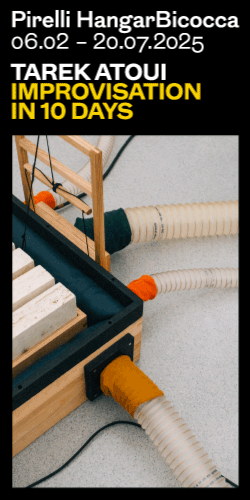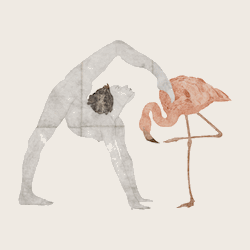[nemus_slider id=”45259″]
—
Arte Contemporanea dalla Lettonia
Mostra organizzata da kim? Contemporary Art Centre, Riga in collaborazione con Careof, Milano
A cura di Simone Menegoi e Zane Onckule
Careof, fino al 19.07.2015
Le fragole del Baltico è una rassegna di arte contemporanea lettone. Inizialmente progettata come complemento del padiglione della Lettonia all’Expo di Milano, è sopravvissuta alla sfortunata cancellazione del padiglione all’ultimo momento.
Le fragole del Baltico presenta una selezione di dieci artisti, per lo più nati intorno al 1980, quasi tutti al loro esordio in Italia: ?riks Apa?ais, J?nis Avoti?š, Ieva Epnere, Kaspars Groševs, Ieva Kraule, Inga Meldere, Daria Melnikova, Ieva Rubeze, Krišs Salmanis and Ola Vasiljeva.
La mostra non cerca la propria unità in un medium o in una tesi; si è formata a partire dal lavoro degli artisti. La sua cornice complessiva è semplicemente quella di una presentazione di opere recenti, già esistenti o create appositamente per la mostra, che abbraccia senza soluzione di continuità personalità artistiche distinte e media diversi: pittura e scultura, video e arte applicata, fotografia e suono. Il titolo, la cui ambizione è di essere al tempo stesso poetico e ironico, è stato suggerito dalla vaga (e vagamente esotica) percezione dei Paesi baltici in Europa meridionale come di contrade gelide, sotto i cui cieli grigi un frutto come la fragola non potrebbe mai maturare.
Di fatto, le fragole e altri berries rallegrano regolarmente le tavole dei Lettoni dall’inizio dell’estate fino a tutta la ricca stagione autunnale; e l’arte contemporanea, che, a parte uno o due nomi, spesso neppure collegati al loro paese d’origine, è poco nota in Italia, è altrettanto vitale e presente.
Se la mostra non ha una tesi o un medium a fare da cornice, è nondimeno abbastanza compatta, e non solo in termini anagrafici. Rispecchia un gusto; il gusto dei curatori, naturalmente, ma anche un gusto più elusivo e difficile da definire, condiviso dalle ultime generazioni di artisti lettoni. Alcuni elementi tendono a ripresentarsi, benché in forme molto diverse. Ad esempio, un’inclinazione a rivisitare il passato, sia esso personale e familiare o storico, come nei dipinti e nelle piccole sculture in gesso di Inga Meldere, che evocano vivaci storie brevi, o nella serie di fotografie di Ieva Epnere che raffigurano studenti che portano fiori ai loro professori il primo Settembre, obbedendo a una consuetudine nata in epoca sovietica. Un forte sentimento del paesaggio, del tempo atmosferico, dell’alternanza delle stagioni, che si ritrova in alcuni degli arguti, ingegnosi video di Krišs Salmanis. Una malinconia diffusa, che aleggia nei dipinti rarefatti e meditativi di ?riks Apa?ais e nei disegni di J?nis Avoti?š, cartoline anonime da località misteriose, affiancati dal dipinto di una coppia spettrale. Un particolare tipo di humour, impassibile e leggermente assurdo, un esempio del quale è l’antologia video di “guaritori televisivi” lettoni degli anni Novanta associata a una colonna sonora di rumore bianco, realizzata da Ieva Rubeze.
Il gusto per la decorazione, le arti applicate e per tutto ciò che è fatto a mano, che accomuna la tuta da ginnastica fatta a maglia da Kaspars Groševs, concepita come abito da inaugurazione; l’allestimento creato da Ieva Kraule per un banchetto da fiaba, con piatti di ceramica che raffigurano facce di commensali da cartone animato e stoffe dipinte con motivi di dolciumi; l’interpretazione letterale di Daria Melnikova della misura e della (de)composizione con immagini bruciate e tuttavia intatte, una ciotola di ceramica rotta già all’origine, o un foglio di carta quadrettata disegnato a mano. E infine un’elusiva idea di domesticità, così come la disegnano le costellazioni di oggetti di Ola Vasiljeva, punteggiati di buffe gag: una porta che diventa una lavagna da un lato e una bacheca dall’altro, due assemblaggi di gusto dada che includono scarpe di vetro, un tappeto bianco su cui è preferibile non camminare, ma disegnato con motivi di scarpe.
Allo scopo di amplificare quest’aspetto di domesticità, e di dare alla mostra la forma di una sorta di interno, i curatori si sono orientati verso un allestimento il cui gusto è meno prossimo a quello del white cube anglosassone del XX secolo che a quello del salon ottocentesco o delle case-studio degli artisti in seguito trasformate in museo, come quella della coppia modernista formata da Romans Suta e Alexandra Be?cova a Riga. Un allestimento che include muri colorati e tende, un sofà e una poltrona, piante in vaso – una caratteristica immancabile di case, studi e perfino spazi espositivi lettoni – e che suggerisce di leggere le opere (le fragole di questo “cestino”) come evocazioni e sostituti del mobilio e di altri articoli della vita di ogni giorno.

Le fragole del Baltico
Contemporary art from Latvia — Organized by kim? Contemporary Art Centre, Riga in collaboration with Careof, Milan
Curated by Simone Menegoi and Zane Onckule
TheopeningeventonJune9th at6.30pmwasaccompaniedbyaperformancebyKasparsGros?evs
Careof, Fabbrica del Vapore, Until July 19, 2015
Le fragole del Baltico (“Baltic strawberries”) provides an insight into Latvian contemporary art. Initially intended to complement the Latvian pavilion at EXPO 2015, it has fortunately survived the sad cancellation of the pavilion. Le fragole del Baltico presents a selection of ten artists, for the most part born around 1980, and mostly exhibited in Italy for the first time: E?riks Apal?ais, Ja?nis Avotin?s?, Ieva Epnere, Kaspars Gros?evs, Ieva Kraule, Inga Meldere, Daria Melnikova, Ieva Rubeze, Kris?s Salmanis and Ola Vasiljeva. The exhibition doesn’t seek its unity in a medium or in a concept; instead it largely forms itself in the practice of its selected artists. Its overall framework is a display of Latvian artists’ works, both existing and new commissions especially created for the exhibition, that in its curation uninterruptedly embraces distinct artistic personalities and individual works in a wide range of media, encompassing: painting and sculpture, applied art and video, and photography and sound.
The title, whose ambition is to be poetic and simultaneously ironic, was inspired by the soft-focused, vaguely exotic perception in Southern Europe of the Baltic countries as cold lands, under whose grey skies a fruit such as a strawberry could never grow. In fact, strawberries and other berries regularly buck up the tables of Latvians, starting from the first months of summer right through to the rich autumn season; and contemporary art, which, aside from one or two names that are often not even linked to their country of origin, is little known in Italy, yet is no less vital and present.
While the exhibition has no overarching concept or medium, it is somewhat compact, and not just in terms of age. It mirrors a taste: the taste of the curators, but also a taste much more elusive and difficult to pinpoint, shared by this particular generation of artists. Here, some elements tend to reappear, although in very different shapes: a slant to revisit the past, be it personal and familiar or historical, as in Inga Meldere’s paintings and plaster miniatures evoking expressive short stories, or in Ieva Epnere’s series of photographs of Latvian students bringing flowers to their teachers on 1st September, a ceremony originated in Soviet times; a sense for the landscape, the weather, the change of the seasons, that can be found in some of the witty, ingenuous, poetic videos of Kris?s Salmanis; a diffuse melancholy, haunting E?riks Apal?ais’ sparse, meditative paintings, as well as Ja?nis Avotin?s?’ series of drawings – anonymous postcards of mysterious locations – paired with a painting of a ghostly couple; a quite peculiar brand of humor, deadpan and slightly nonsensical, an example of which is Ieva Rubeze’s video compilation of Latvian “TV healers” from the 90s set to a white noise soundtrack, which is supposed to manipulate and improve one’s spiritual energetics; a taste for decoration, applied arts and all kinds of hand-made objects, typified by Kaspars Gros?evs’ knitted tracksuit, an outfit for an opening event, or by Ieva Kraule’s setting for a fairy tale feast – ceramic plates bearing cartoonish eaters’ faces, and fabric painted with pastry motifs -, or by Daria Melnikova’s literal take on measurements and (de)composition through burned images, a smashed bowl or hand-drawn graph paper; and last but not least, a certain, elusive idea of domesticity, as framed in Ola Vasiljeva’s pun-filled constellation of objects – a woolen rug, a door turned into a blackboard on one side and a bulletin board on the other, and two dada-esque assemblages including glass shoes.
Aiming at amplifying the aspect of domesticity and to develop the show as an interior of sorts, the curators have gone for a display whose taste is closer to the 19th century Salon or to the artists’ studio / houses-turned-museums, like that of Riga’s modernist couple Romans Suta and Alexandra Bel?cova, than to the Anglo-Saxon 20th century white cube. A
display that includes colored walls and curtains, a sofa and armchair, potted plants – a regular feature of homes, artists’ studios or even exhibition spaces; – helps to record the relation between the various artistic elements – the berries in this basket – linked by a peculiar setting where artworks recall and replace and exchange a wide range of physical ephemera – furniture and other items of our daily life.











